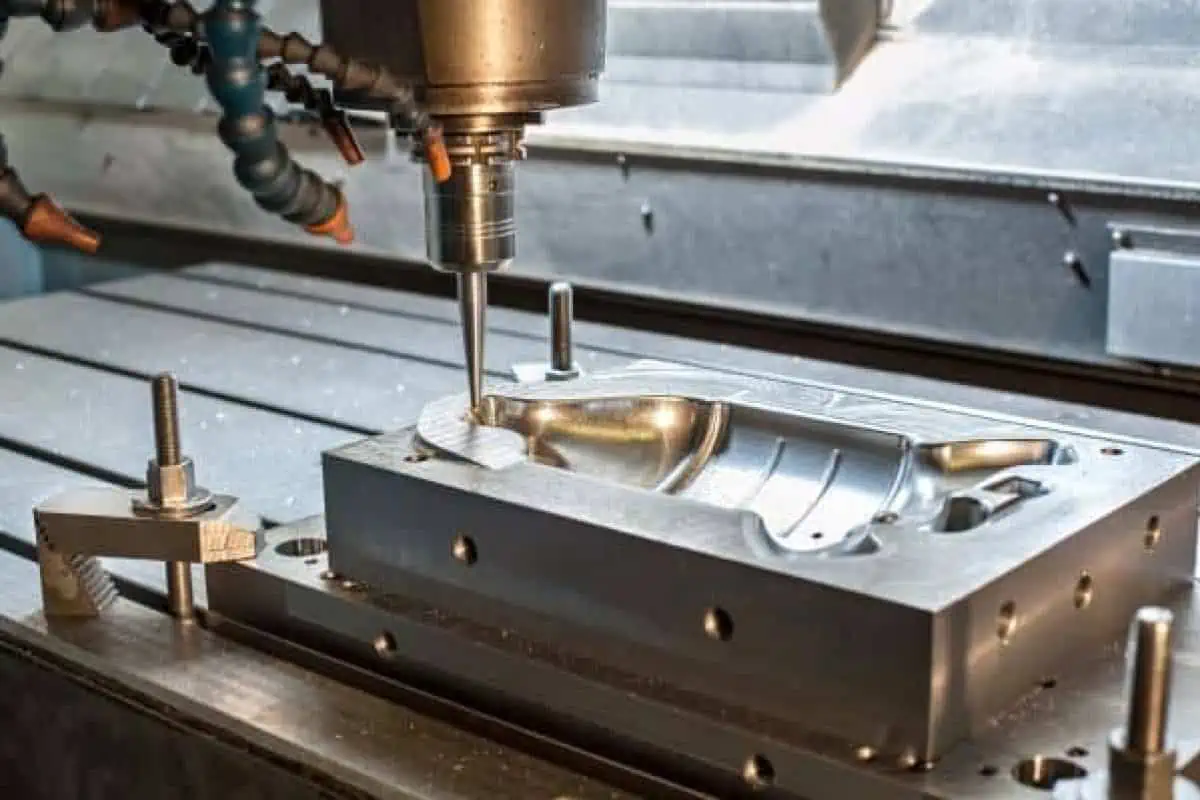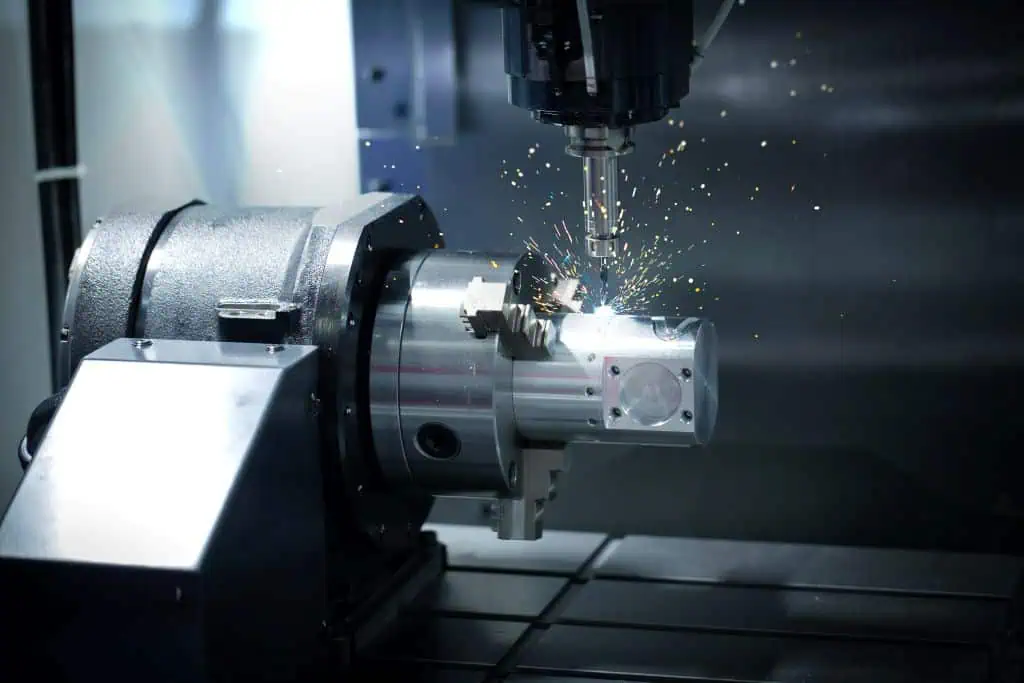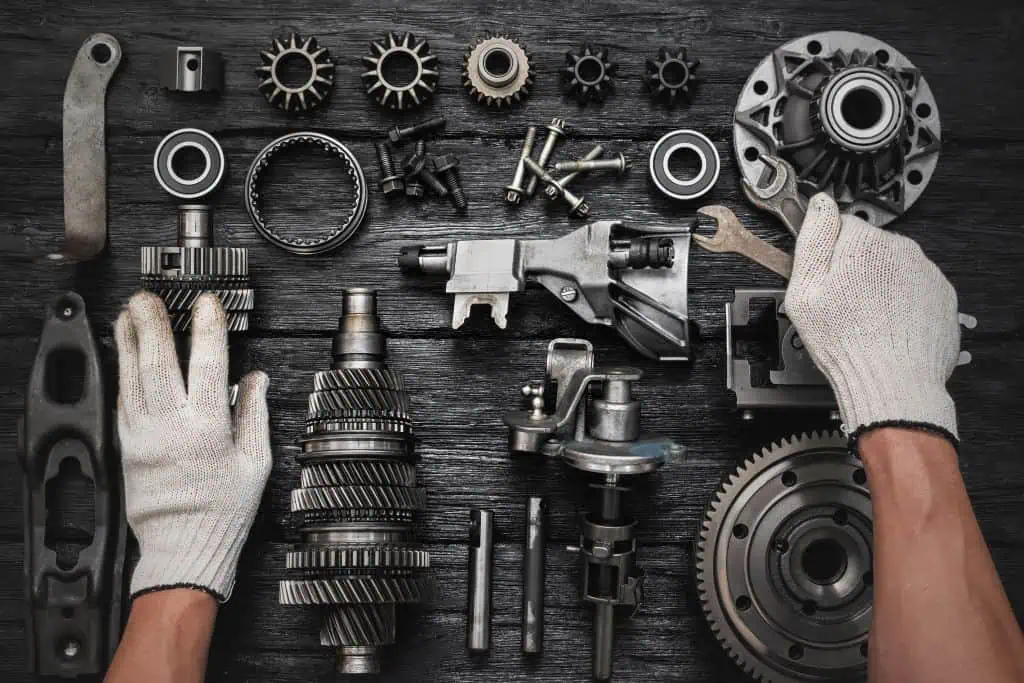Introduction
At Armes Precision, our multi-specialty manufacturing and machining company has been using a variety of multi-axis milling machines ever since our company was founded in Lynchburg, Virginia, in 1995. While the cost of mixed-asset types[1] might be expensive compared to uniform-asset types, the diversity in capability is well worth the cost.
Milling machines play a crucial role for Armes Precision. They enable the manufacture and assembly of many complex parts and components for our clients. While each type of milling machine offers distinct capabilities, working with 2-axis, 3-axis, and 4-axis machines provides a range of advantages over relying solely on a single type. In this technical blog, we will delve into the benefits of each axis configuration and explore why having a combination of these milling machines can significantly enhance productivity and expand design possibilities – no matter how complex the project is.
2-Axis Milling Machines:
Two-axis milling machines, also known as X-Y milling machines, offer two-dimensional cutting capabilities. These machines move the workpiece along the X and Y axes, allowing for precise horizontal and vertical cutting. Some key advantages include:
- Simplicity: Two-axis machines are relatively straightforward and easy to operate, making them ideal for basic milling operations. A significant advantage to using this machine type is reduced setup time, which for low-volume part runs can be substantially less than that of a 3-axis or 4-axis Computerized Numerical Control – CNC milling machine.
- Cost-effectiveness: These machines are generally less expensive than their multi-axis counterparts, making them a cost-effective solution for simpler projects.
- High-speed operations: With fewer axes to control, 2-axis milling machines can often achieve higher cutting speeds, reducing overall machining time.
There are some disadvantages to 2-axis milling machines, including:
- Limited capabilities: Two-axis machines are restricted to two-dimensional cutting along the X and Y axes. This limitation makes it challenging to create complex geometries and intricately contoured designs that require multi-plane movements.
- Reduced versatility: Without the ability to move vertically along the Z-axis, 2-axis machines may struggle to handle certain materials or perform tasks such as deep pocket milling or drilling.
- Longer machining time: Due to their limited cutting capabilities, 2-axis machines may require multiple setups and additional operations, resulting in longer machining times for complex parts.
3-Axis Milling Machines:
Three-axis milling machines, which incorporate X, Y, and Z axes, add the crucial third dimension to machining operations. Here are the advantages of utilizing 3-axis machines:
- Increased flexibility: The addition of the Z-axis allows for vertical movement, enabling the fabrication of more complex geometries and contours.
- Enhanced precision: With the ability to move along three axes, 3-axis machines offer improved precision and accuracy, resulting in high-quality finished parts and components.
- Reduced setup time: Three-axis machines can typically complete complex operations in a single setup, increasing efficiency while minimizing the need for additional fixturing (that is, keeping the workpiece immobilized while its being machined).
The cons for using 3-axis machines are:
- Access limitations: The fixed orientation of the spindle on 3-axis machines can lead to difficulties accessing certain areas of the workpiece. This limitation may require repositioning or manual adjustments, adding time and complexity to the machining process.
- Limited undercut machining: While 3-axis machines can handle most three-dimensional shapes, machining undercuts or features on non-perpendicular planes can be challenging without additional setups or specialized tools.
- Reduced productivity for complex parts: Machining highly intricate parts with complex contours or steep angles may require multiple setups and tool changes on 3-axis machines, leading to increased setup time and decreased productivity.
4-Axis Milling Machines:
Four-axis milling machines build upon the capabilities of 3-axis machines by introducing rotational movement. The fourth axis, typically a rotary table or indexer, enables the workpiece to be rotated, opening new possibilities in high-quality design and manufacture. Key advantages include:
- Increased productivity: The addition of rotational movement allows for multi-sided machining, reducing the number of setups required and significantly improving productivity.
- Enhanced machining of complex geometries: With the ability to tilt and rotate the workpiece, 4-axis machines excel at machining undercuts, angled features, and curved surfaces.
- Improved efficiency: Four-axis machines can perform intricate operations that would otherwise require manual repositioning, leading to time savings and higher overall efficiency.
Drawbacks of 4-axis milling machines include:
- Increased complexity and cost: The addition of the fourth axis introduces more mechanical components and increased complexity to the milling machine. This complexity often translates into more equipment costs, maintenance requirements, and machinist training.
- Programming complexity: Operating a Computerized Numerical Control (CNC) 4-axis machine typically involves more complex programming than for 2-axis or 3-axis machines. It requires the consideration of rotational movements, tool orientation, and coordinating movements across multiple axes. When you embark on using a 4-axis milling machine, it might be time to hire a full-time CNC programmer.
- Limited for certain geometries: While 4-axis machines excel at machining rotational and curved features, they may face challenges creating intricate geometries that require simultaneous movements in more than four axes.
Conclusion:
While each type of milling machine offers its own unique advantages, the combination of 2-axis, 3-axis, and 4-axis machines provides a comprehensive set of capabilities that greatly benefit machining operations. The simplicity and cost-effectiveness of 2-axis machines, the flexibility and precision of 3-axis machines, and the increased productivity and versatility of 4-axis machines all contribute to Armes Precision achieving top-quality results.
By investing in a combination of these milling machines, our multi-specialty manufacturing company has tackled a wide range of projects, reduced setup time, and enhanced our clients’ design possibilities.
Such improved efficiency has come at a cost, however, since we have needed to hire machinists with the best skillset for each type of milling machine. Additionally, the process of planning and scheduling production has become more convoluted due to the constraints each machine type has vis-à-vis part manufacturing.
As a parts manufacturer or a production planner, you have to ask yourself: Do I have the volume to justify long setup times? Does too much complexity in part design warrant using just an X-Y machine?
Armes Precision of Lynchburg, Virginia, has been helping clients determine the right milling machine for their machining job since 1995. As specialists in the field of Fabrication and Assembly Services, our experienced technicians create customized prototype and production-quality parts that precisely meet your design requirements – always on time and within budget.
Contact Armes Precision for a free quote and to learn more about our state-of-the-art machining facility, including our 2-axis, 3-axis, and 4-axis milling machines. Call 434-237-4552 or visit ArmesPrecision.com/contact; let’s get started creating perfection together.











